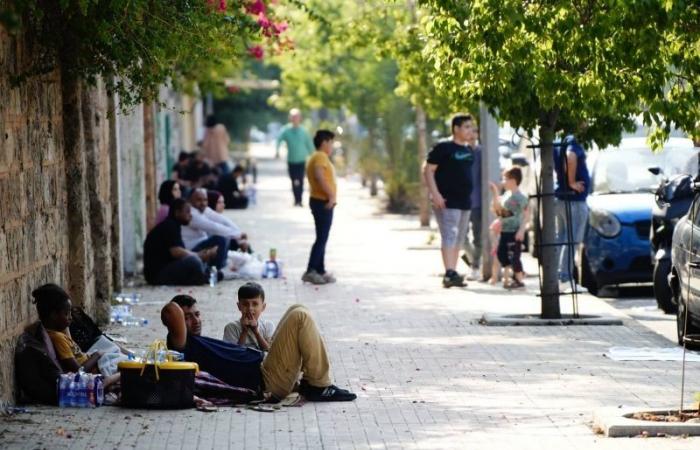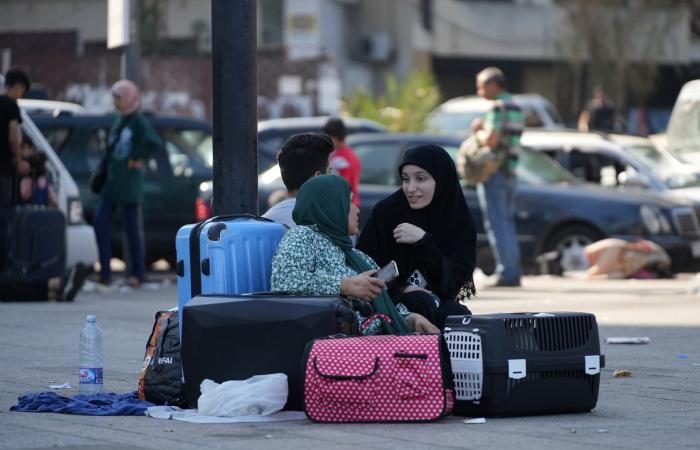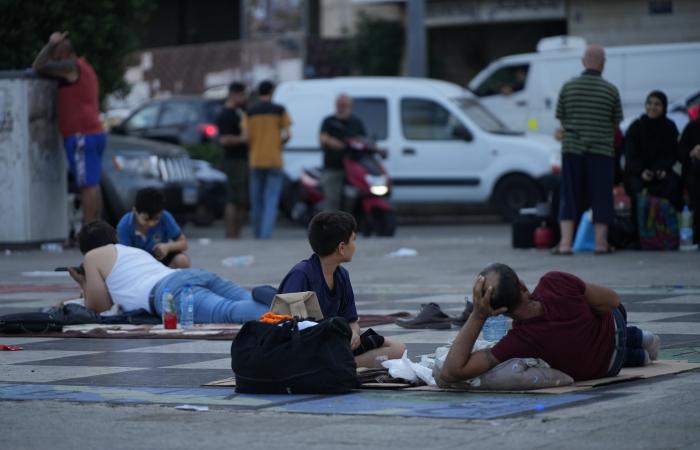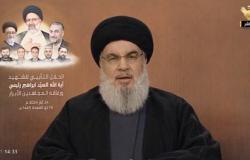The tragic flood began several days ago. Since last Monday, and the massive Israeli strikes on South Lebanon and the Bekaa, more than a hundred thousand inhabitants of these regions have had to flee. Friday evening, a new exodus, in panic and terror, occurred from the southern suburbs of Beirut, shelled with unequaled intensity since the start of clashes between Hezbollah and Israel, on October 8, 2023 .
In the early morning, in various places in Beirut, families, dazed after having fled their homes, in terror in the middle of the night, waited to know what to do. Because, as an old man and his wife said on a sidewalk in Saïfi, in downtown Beirut: “No one helps us. The State is absent.”
Our journalists went to meet these people, many of whom had to spend the night outside, notably on the Place des Martyrs, in downtown Beirut, or even on the Corniche or the beach of Ramlet el -Baida.
“We took our grandchildren to Batroun, then came back here… We have nowhere to go,” confides a woman who fled the Bourj el-Brajné camp, in the southern suburbs. “We saw the strikes and thought we were going to die. We saw everything, it was a real genocide,” she said from Saïfi, in downtown Beirut, where she found refuge.
For many displaced people, last night’s bombings awaken bad memories of the 2006 war between Israel and Hezbollah. At the time, the southern suburbs of Beirut had been literally razed by Israeli bombings. But for this woman who does not wish to give her name, the “ten strikes” which hit Hezbollah HQ in the suburbs on Friday around 6:30 p.m. were of a much greater intensity than those of the 2006 war. “He we have to flee, we won’t go back there again,” says this woman, originally from South Lebanon, who says she has no political affiliation. Then she adds: “The price of this war is far too high.” Her daughter, who has just gotten married, adds: “What happened yesterday was like the images we saw from Gaza. This war must end.”
As in Gaza, also, the Israeli army launched multiple warnings last night, calling, with supporting maps, the inhabitants of certain neighborhoods to flee as quickly as possible before bombings. What followed were terrible scenes of civilians fleeing on foot, by car, as best they could, from their homes located in a neighborhood that would eventually be bombed by Israel.
People displaced by strikes, in the streets of Beirut, September 28, 2024. Photo Mohammad Yassine / L’Orient-Le Jour
Mohammad Jomaa is sitting on a piece of sidewalk in the Sanayeh neighborhood. He arrived there after walking about ten kilometers from his neighborhood of Laylake, in the southern suburbs. This area was one of those identified by the Israeli army as housing “Hezbollah weapons” and for which evacuation orders had been issued. Allegations rejected by the Shiite party. “I don’t know where to go,” he says. Not far from there, dozens of families are camping near the garden. In the back of a van, a child sleeps on a makeshift mattress. His parents, in the front seats, are glued to their phones. Since dawn, displaced people have been driving around the neighborhood in search of shelter. In one of them, we can see, on a seat, a small bird in a cage.
People displaced by strikes, in the streets of Beirut, September 28, 2024. Photo Mohammad Yassine / L’Orient-Le Jour
On the sidewalks of the city center, we see families with luggage. Some have nothing. The escape was too fast.
Sitting on sheets on one of these sidewalks, members of a family from Bir Hassan eat manakich distributed by volunteers this Saturday morning. They come from Bir Hassan. “We fled after the first Israeli strike on the southern suburbs, which took place around 6:30 p.m. Since then we have been on the street. We didn’t take anything with us,” explains the mother. “We don’t know where we’re going to sleep tonight,” she continues. Her husband stayed at home until 4 a.m. “They were hitting. Everyone was screaming in the neighborhood,” he says. “In July 2006 (during the war between Hezbollah and Israel), we fled to Syria. But the bombings last night were worse than those of 2006,” he adds.
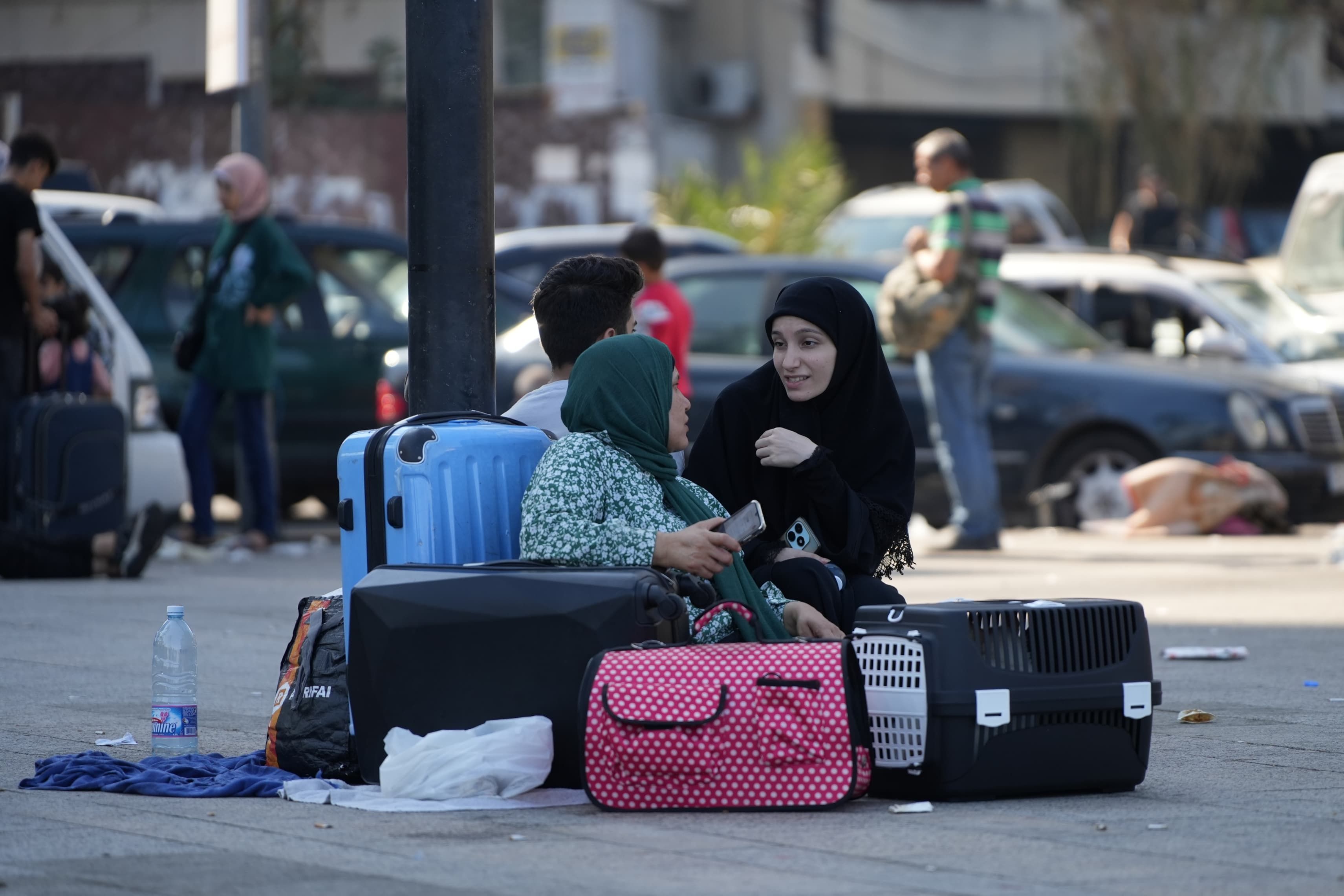 People displaced by strikes, in the streets of Beirut, September 28, 2024. Photo Mohammad Yassine / L’Orient-Le Jour
People displaced by strikes, in the streets of Beirut, September 28, 2024. Photo Mohammad Yassine / L’Orient-Le Jour
The bombings resemble “the bombings of the Israeli invasion of Beirut in 1982,” said another refugee from the southern suburbs based on Martyrs Square in the city center. “They told us to evacuate as if we were animals,” he continues, referring to the various “immediate evacuation” messages sent by the Israeli army on Friday night. “But every time we fled, new bombs fell on us,” continues this man who says he left his home at 2:30 in the morning.
Asked about the fate of Hezbollah leader Hassan Nasrallah, he said: “It doesn’t matter if the Sayyed (Nasrallah) died as a martyr. God wanted it.” “Israel has no respect. We will trample them, we will be victorious,” he adds. Around 11 a.m. Saturday morning, the Israeli army claimed that Hassan Nasrallah had been killed in the 6:30 p.m. strike on the party headquarters. A source close to Hezbollah told AFP that “contact was lost” since Friday evening with the party’s secretary general.
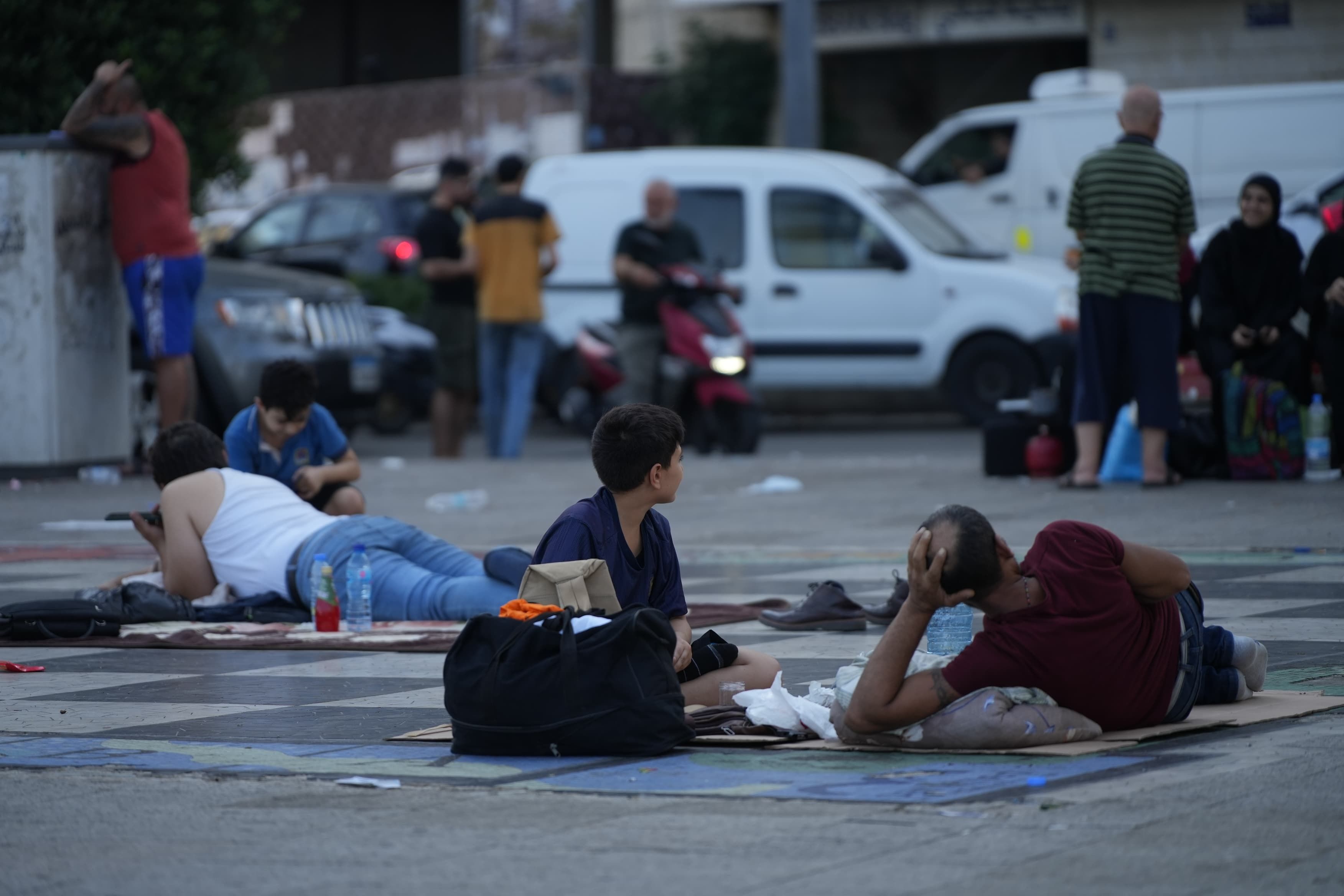 People displaced by strikes, in the streets of Beirut, September 28, 2024. Photo Mohammad Yassine / L’Orient-Le Jour
People displaced by strikes, in the streets of Beirut, September 28, 2024. Photo Mohammad Yassine / L’Orient-Le Jour
And then, in the flow of displaced people, there are also many Syrians. A young woman from Aleppo only had time to grab some clothes and a gas burner before fleeing. “We fled as soon as the first strike hit the southern suburbs. We were completely terrified. We don’t know what we’re going to do. No one is helping the Syrians and we are afraid that the war will develop further,” she adds.
On the Place des Martyrs, a man is sitting under a tree. He says: “We come from the southern suburbs of Beirut. After Israeli calls to evacuate, we left. We came here, we have no land, we have no house, we have nothing. We are sitting under this tree. I repeat: the Lebanese flag has a tree in the middle, we came to hide under the tree. Of all the Lebanese officials, none are looking at us. Look how the people are sitting there. Look how people live »
The tragic flood began several days ago. Since last Monday, and the massive Israeli strikes on South Lebanon and the Bekaa, more than a hundred thousand inhabitants of these regions have had to flee. Friday evening, a new exodus, in panic and terror, took place from the southern suburbs of Beirut, shelled with an intensity unequaled since…
- -
